Engage Culture Builds Community !
Spring 2024


The power of theatre supports personal development
Beading connects youth to culture and develops patience









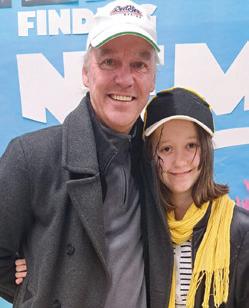

Spring 2024


Beading connects youth to culture and develops patience










ast fall, when my daughter Hannah started Grade 7 she auditioned and got a role in a school musical. She spent numerous hours, both at lunchtime and after school, rehearsing with her fellow cast members. After months of rehearsals, the time for the performance arrived. She didn’t practice openly at home, so my wife and I really didn’t know what to expect. We eagerly sat in the school gym and waited until it was Hannah’s time to shine. She did such a great job! We were a bit surprised at how well she could sing. All of the kids seemed so focused and you could see all of the hard work coming to fruition. Probably the most beautiful part of the evening was when my daughter came running over to us with a giant smile on her face. She was so proud and happy. This opportunity was memorable and would definitely have a positive impact on her going forward.
There has been lots of studies that show the value of kids participating in cultural activity. Much of the research shows how children and youth who have experiences in the arts and culture have better self-esteem, confidence, and quite often, increased learning outcomes. Many learn about discipline through various lessons and practice, reaping the rewards of this hard work.
While many of our readers are well aware of the importance of children being involved in cultural activity, it’s important that we all ensure that Saskatchewan parents understand the benefits of cultural activity for their kids. This issue of Engage is designed to help share and reinforce the benefits that meaningful cultural activity has in young people’s lives. While cultural activity can be enjoyed at any age, a passion for a particular discipline is often developed from an early age.
In closing, to all those who help children have a glimpse into the beauty of cultural activity, all of those artists, teachers, knowledge keepers, practitioners and volunteers who work so hard to provide our children with these valuable experiences, I want to extend our thanks and appreciation. In the case of Hannah’s musical experience, I truly understood the importance of these leaders when I saw that smile on my daughter’s face.
 Dean Kush
Dean Kush
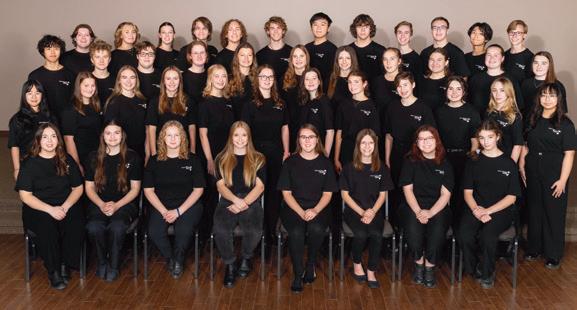
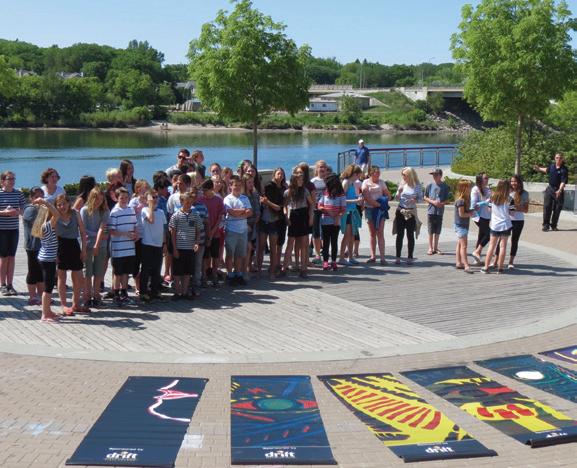
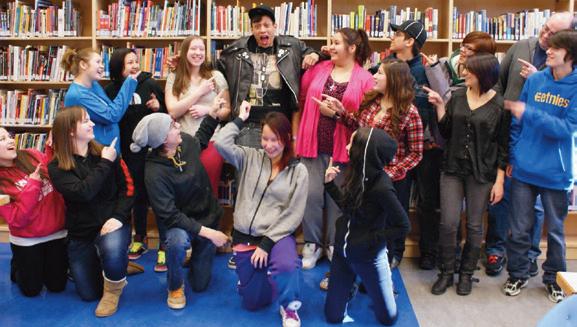
Cultural activity covers a wide range of activity from music, visual arts or dance lessons to learning about traditional cultures, storytelling or exploring a museum, heritage site or art gallery. Activities can involve watching, learning or actively engaging in a cultural experience. While all cultural experiences are valuable for children and youth, active engagement has been shown to have a more lasting impact – contributing to mind, body and soul.
Key characteristics of meaningful cultural activities and experiences are ones that encourage participants to:

Today we live in communities that are made up with people from a diversity of backgrounds. Meaningful cultural activity will expose us to this diversity and help us open our minds to differences in backgrounds and how different cultures add value to our communities and to our own lives.
“Dance is a great emotional outlet to forget your troubles for a couple of hours and have some fun. As well as, being able to create something and put it out in the world.”
– Caitlin Preston, Prairie Gael School of Irish Dance
Meaningful cultural activity challenges us to think about life from new angles and understand that there can be more than one right answer. When involved with cultural activity, or working alongside others, we have the opportunity to think creatively about ideas and explore new solutions with an open mind.
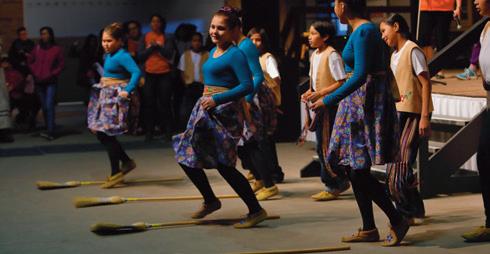
“Learning languages fosters cross-cultural understanding and global thinking — we learn to see beyond ourselves and our own lives. I really believe that learning languages connects us to one another.”
– Gabriele Waidlich-Harrison, executive director, Saskatchewan German Council
“Drama education is more than helping students overcome stage fright and honing public speaking skills, it is a valuable creative outlet for young people, as well as contributing to important life skills. Drama education encompasses a broader spectrum of skills, including teamwork, problem-solving, resilience, and critical thinking.”
– Ray Deans, Saskatchewan Drama Association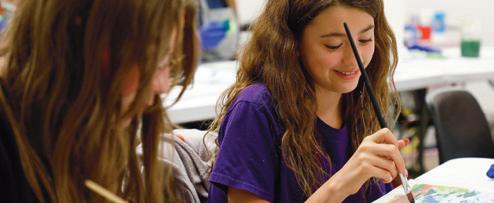
Cultural activity, particularly creative arts, opens the door to our hearts and minds. When we have opportunities to actively explore our thoughts, values and feelings, and then express them creatively in some way – whether by painting, drawing, dancing, playing an instrument, acting, writing, sculpting, crafting or speaking another language, we can understand ourselves better.

When children and youth have the opportunity to find and experience meaningful cultural activity, they often spend time honing new skills and forming a passion for this creative outlet. Time spent on a meaningful cultural activity helps build their confidence and contributes to a higher self-esteem.
“Musical expression allows youth the opportunity to develop their own voice. There is confidence that comes from finding your own voice, and it’s really important for setting them up for success in the world.”
– Eliza Doyle, Community Arts Mentorship Program“Passing on cultural practices gives a sense of belonging. It promotes the passing on of important knowledge, skills and craftsmanship and language. It helps shape who we are and where the future may take us.”
– Elder Brenda McDougal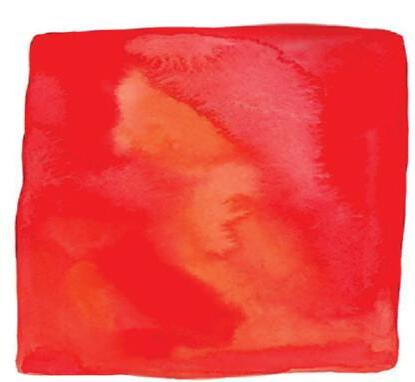
When exploring new cultures it’s sometimes easy to hear, learn and believe in incorrect stereotypes. Meaningful cultural activity is delivered by sources that have the lived experience required to teach and help others understand. Learning from these sources provides a deeper understanding and connection for all involved.
“People underestimate the effect art has on skill development and confidence. It gives or gives back voice to those who do not feel heard.”
– Traci Foster, Listen to Dis’
Being part of cultural activities in our communities provides us with the opportunity to meet, converse and develop relationships with others. Meaningful cultural activity gives us space to have meaningful interactions. Whether we are dancing, acting on stage, or working with a writers groups, cultural activity provides us with the opportunity to be part of a team, to collaborate on ideas and receive support from others.

Experiencing many different cultural activities, such as music, visual art, dance, language lessons, etc., creates new connections in our brains that increase our abilities to concentrate and understand more complex ideas found in different areas of education.

Meaningful cultural activity creates an environment where we feel we have found a safe place, where we can be ourselves and share our interest and ideas with others. Whatever our background and beliefs, gender identity and/or physical or mental disabilities, meaningful cultural activity will provide an open door, a friendly face, and any accommodations needed to ensure that everyone who wants to participate feels included.
“One thing any parent will tell you right now, is the struggle of how to help kids feel like all their friendships are not solely online. SaskExpress actually gives kids physical, in-person support with likeminded people. Ninety-five per cent of our casts say to me, ‘I’ve made friends for life.’”
– Danny Balkwill, SaskExpress
“Research shows that taking part in cultural activities enhances reading, mathematics, and grades. These activities help students refresh their minds and boost brain function, leading to better concentration and higher grades.”
–
AshleyGreen, Texas A & M College
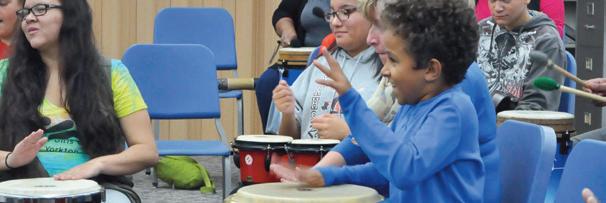
“It’s important to me because being creative allows me to explore myself, my feelings and my emotions. And, when I’m creating, I learn a lot of about why I am who I am. He adds, I hope that at some point after I’m gone a song that I’ve written will connect with somebody, or helps somebody feel like they are not alone, because to me that’s leaving my mark.”
– JJ Voss, musicianCultural activities that get our bodies moving, such as dance, heritage tours, playing an instrument, and even singing, help improve our physical health, in the same ways as active sports. These activities can help refine our motor skills and coordination. Besides physical health, meaningful cultural activity will contribute to improved mental health by helping us express ourselves, explore our inner emotions and participate in something we enjoy.

“That's why I was really interested in in providing these teachings to the students to reconnect them to their culture and to give them some skills to cope with their mental health so, they have something healthy to turn to.”
– Lindsay Smith, beading instructor
The earlier we start in a cultural activity we enjoy, the more time we have to involve ourselves, learn and experience a lifetime of personal enjoyment. Ask any artist or cultural leader and they will tell you that having a passion has been deeply meaningful to their lives.
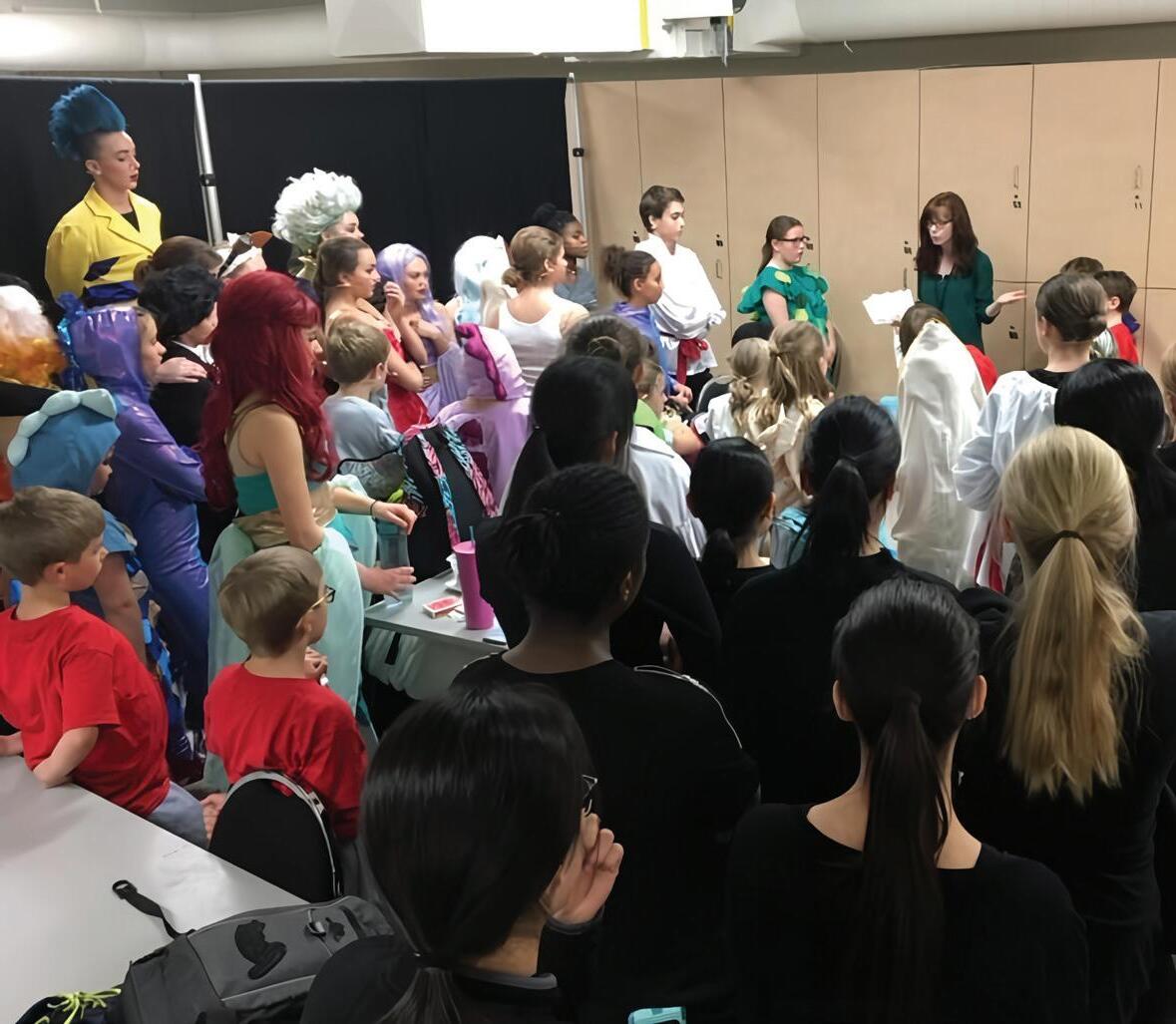
Youth theatrical experiences develop many skills that help youth in navigating the complexities of their personal development. Besides the benefits of social interaction, drama also provides an essential platform for children and youth to hone their creative and expressive abilities.
“In theatre, we’re back to ‘real life’ after COVID — face to face, making eye contact, and making those personal connections,” says Tanya Johnson, vice-principal and school psychologist, Cornerstone Christian School in Moose Jaw and the president-elect, Saskatchewan Drama Association (SDA). With theatre as her lifelong passion, Johnson’s involvement with the SDA has shaped her perspective on the transformative power of drama.
Similar to Johnson, SDA president Ray Deans, who has over four decades of theatrical experience, is a witness to the tangible benefits the SDA brings to the growth of drama in the region.
“Many alumni of the program, in various forms, have gone on to educate the next generation of students, ensuring the growth of drama and theatre in the province and beyond,” says Deans, who currently teaches at A.E Peacock Collegiate in Moose Jaw.
Committed to making drama accessible, the SDA plays a crucial role in fostering drama and theatre in schools across Saskatchewan. The SDA’s diverse initiatives, from regional festivals to scholarships and curriculum support, underscore its commitment to advancing drama education and enriching the artistic landscape in Saskatchewan.
According to Johnson and Deans, theatrical experience offers a myriad of benefits for young individuals. Drama education is more than helping students overcome stage fright and honing public speaking skills, it is a valuable creative outlet for young people, as well as contributing to important life skills. Drama education encompasses a broader spectrum of skills, including teamwork, problem-solving, resilience, and critical thinking.
According to Johnson and Deans, stepping into a character’s shoes and exploring their story allows an actor to empathize with others and understand feelings from another’s perspective. As a result, individuals develop a deeper understanding of others, fostering social and emotional intelligence.
Beyond personal growth, drama creates ‘theatre families’ that forge strong camaraderie while providing a safe place for those involved to express themselves, says Deans. “When on stage, one is quite vulnerable. The other actors in the production are there to support and cheer on one another. These relationships are built in a short time, but last a lifetime.”
Johnson believes that theatre is one of the most inclusive environments. Regardless of one’s background or personality, theatre is a place where everyone fits. “It’s beautiful. We all can work together to create this wonderful story.”
The Saskatchewan Drama Association receives Annual Global Funding from Lotteries Trust Fund for Sport, Culture and Recreation.
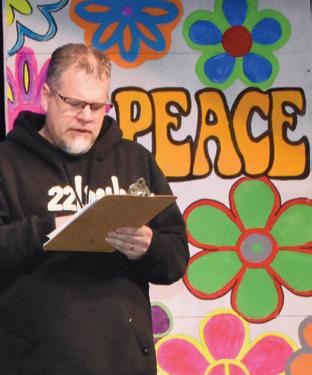
“In theatre, we're back to ‘real life’ after COVID — face to face, making eye contact, and making those personal connections.”
— TANYA JOHNSON
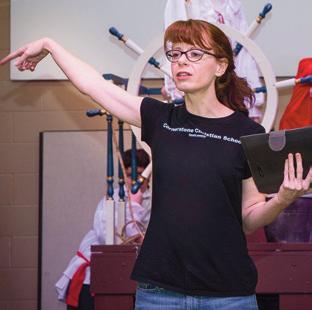
 Ray Deans (top right) has seen many students develop essential life skills through their participation in drama education. (Photo courtesy of Ray Deans.) Tanya Johnson (middle left) teaches drama to high school students, building teamwork, problem-solving, resilience, and critical thinking skills. (Photo courtesy of Tanya Johnson. )
Ray Deans (top right) has seen many students develop essential life skills through their participation in drama education. (Photo courtesy of Ray Deans.) Tanya Johnson (middle left) teaches drama to high school students, building teamwork, problem-solving, resilience, and critical thinking skills. (Photo courtesy of Tanya Johnson. )
Saskatchewan’s music scene has always been lively and vibrant, but one organization decided to uplift the hip hop genre in Stanley Mission. Community Arts Mentorship Program (CAMP) SK Arts has received such positive feedback from their hip hop workshops that they wrapped up their third successful year of hosting, with big plans to continue and expand in the future.
Stanley Mission, a community that has welcomed pilot music mentorship programs in the past from CAMP’s founder Eliza Doyle, has been crucial to the success of the program’s growth. “The community
provides a lot of support, access to instruments and highly functioning music rooms, recording studio sessions and access to the local radio station,” Doyle explains.
Zoe Slusar, who goes by ZHE the Free in the hip hop scene, returned to Stanley Mission to help deliver the workshop for the second year in a row. Along with building trust with a facilitator, Slusar says the youth are also building connection and community with one another. “The sessions build community because the youth support each other in sharing their voices individually and as a group,” she says. And, because there are many other elements in the genre – such
as the DJ, the emcee/rapper, graffiti artists and dancers – there is a lot of opportunity to build connections with others while finding what area feels best for the youth.
Equally as important, both Doyle and Slusar agree that, artistic expression can have a positive influence on those who may be suffering with grief, anxiety, loss, or any other mental health issues. “Hip hop is an amazing tool for creative release,” Slusar explains. “It’s a very accessible art form that costs nothing and helps young people speak their truth. Whatever young people may be experiencing, they can write about it and find healing through the music.”
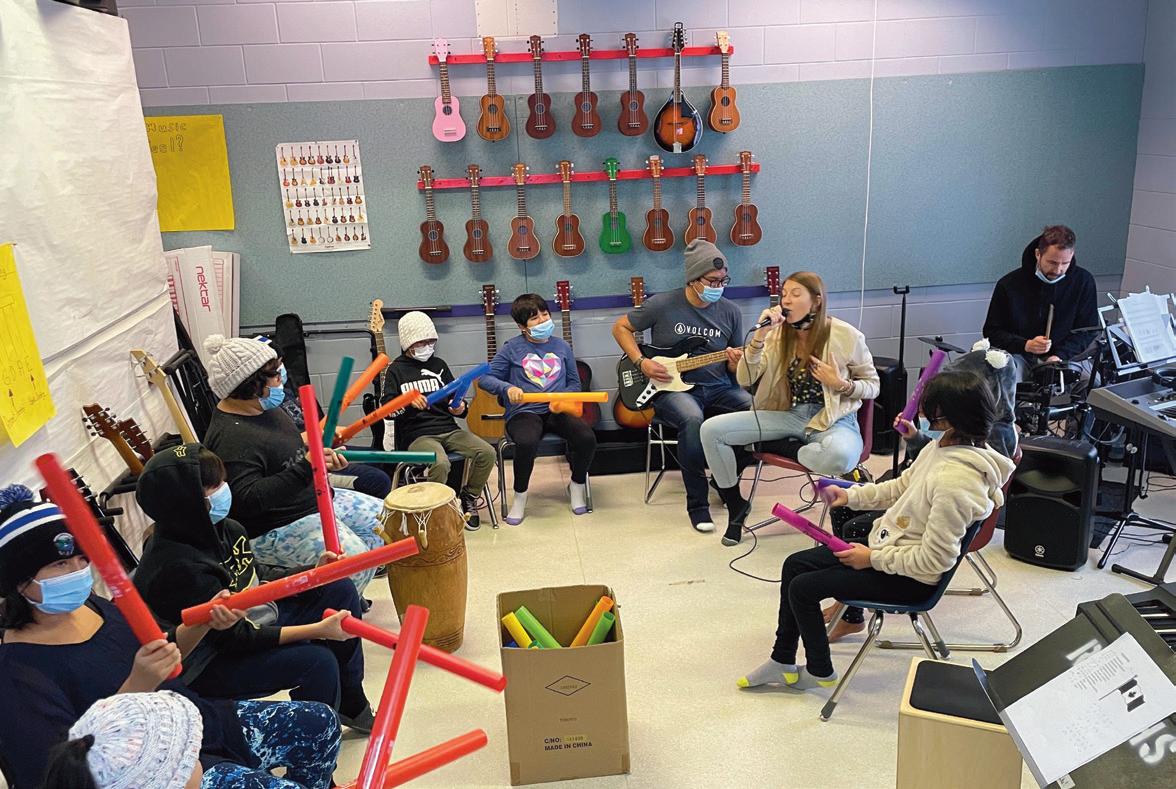
The program casts a wide net of youth from grades 3 to 12, and it requires no previous experience to participate. Workshop sessions are accommodated for the varying age groups over the course of the week, and the program ends with a recorded song at the local radio station.
Doyle says, “Musical expression allows youth the opportunity to develop their own voice. There is confidence that comes from finding your own voice, and it’s really important for setting them up for success in the world.”
“Hip hop is an amazing tool for creative release. It’s a very accessible art form that costs nothing and helps young people speak their truth. Whatever young people may be experiencing, they can write about it and find healing through the music.”
— ZOE SLUSAR
Perhaps most important to the success of the program is the community trust Doyle and musicians have built within the community. “An Elder shared with me that it is really important to bring back the same musicians and build off the programming for consistency,” she says. “There are a lot of service workers and practitioners who come and go from the community, and trust can be a really hard barrier with youth.”
Further, the organization steers away from ‘one-off’ sessions in communities, and instead opts for permanent music positions in residencies in northern communities, with multiple musicians who rotate residencies on a consistent basis. “Bringing the same people back over the course of a year or more builds relationships in a good way.”
For the future, CAMP hopes to expand into other northern communities with more frequent workshops in communities with existing relationships. Most importantly, CAMP remains committed to bringing the arts to northern communities and building confidence in young people.
CAMP Sask Arts has received project support from SaskCulture’s Multicultural Initiative Fund, Northern Youth Cultural Fund and the Small Grant Accessibility Program, all funded by Sask Lotteries Trust Fund for Sport, Culture and Recreation, delivered in partnership with SaskCulture.
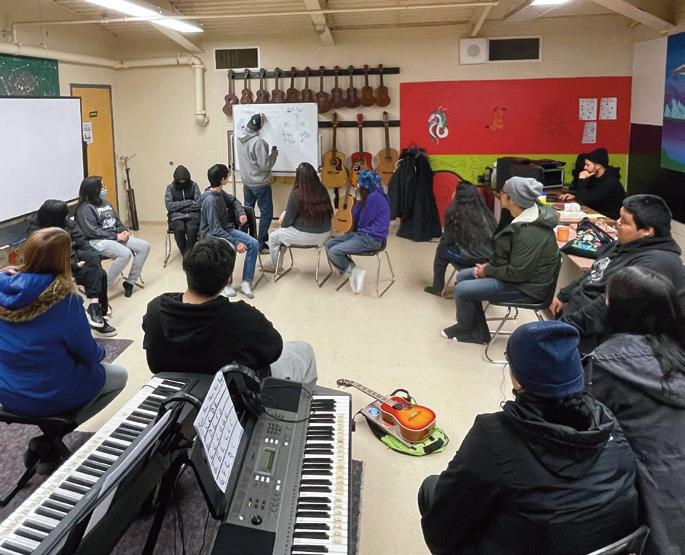
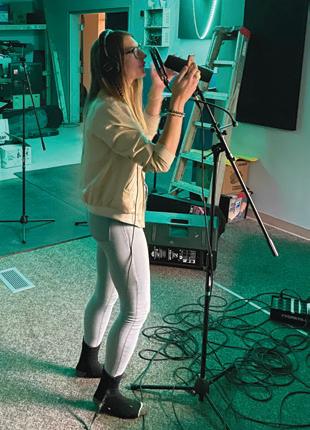
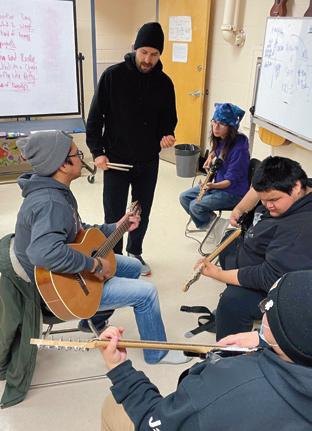
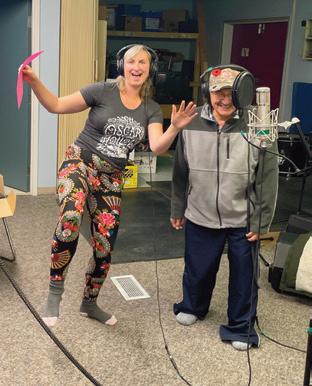
As a child, Warsha Mushtaq discovered a love for words and writing poetry. However, her involvement in a Sage Hill Youth Writing Workshop, instructed by writer Danica Lorer, is where she discovered her voice.
Mushtaq, the former Youth Poet Laureate, says, “To this day, I remember what she [Lorer] did for me and how encouraging she was. That guidance and mentorship, you couldn’t really get anywhere else.
The amount of growth that happens in that space is just so phenomenal.”
Mushtaq, attended her first Sage Hill workshop the year she was finishing middle school. Like many of the young writers that attend the program, she became a repeat participant, coming back for the next three summers.
Tara Dawn Solheim, executive director, Sage Hill Writing, says that the organization’s
youth programs offer young creative minds in the province tools and support to hone their skills. The workshops are led by published Saskatchewan writers, giving participants access to personalized professional mentorship, free of cost.
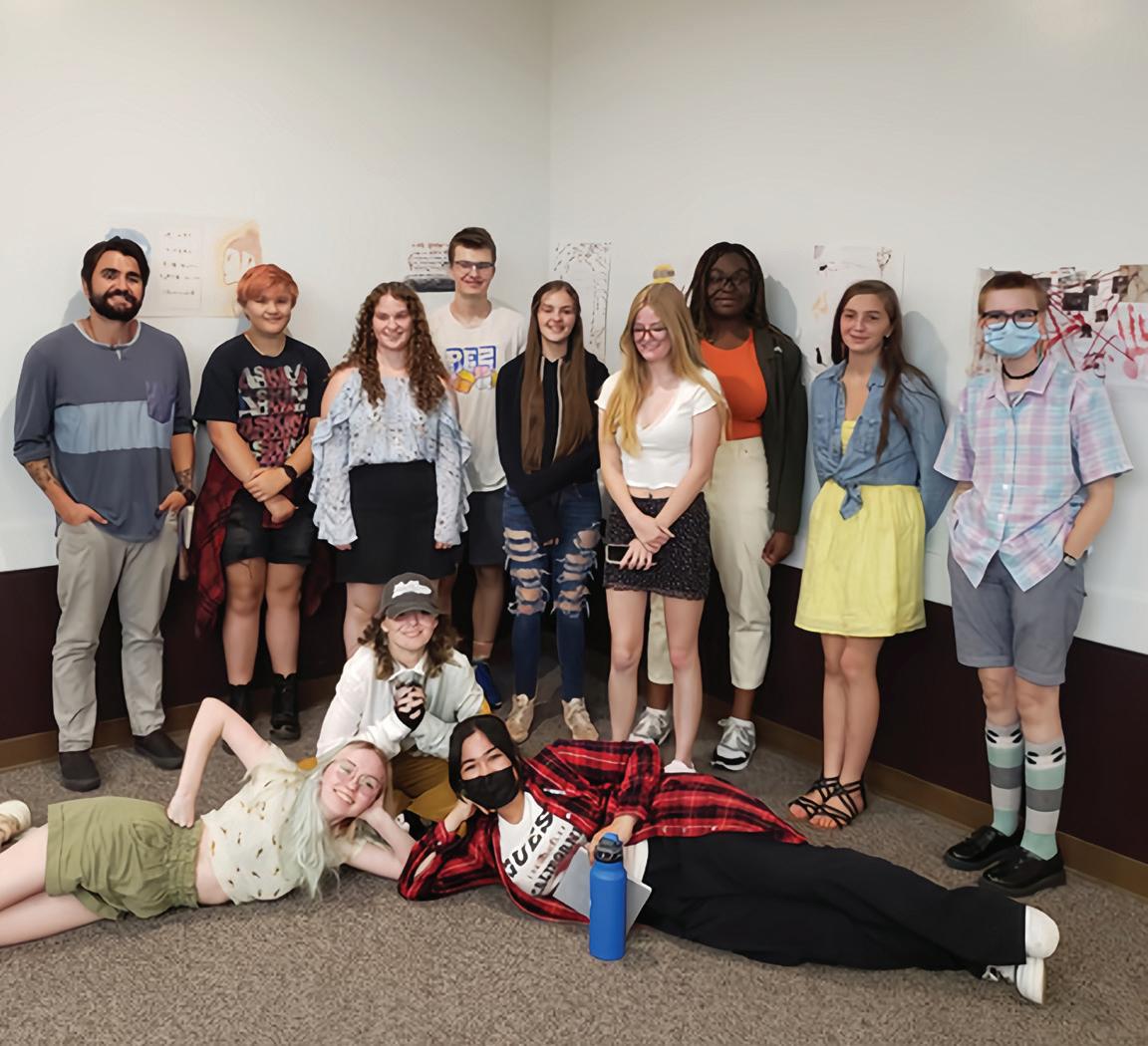
“Students who are interested in creative writing might not find support in their school, but they can find support through us and through the community that they build with the other students,” says Solheim.
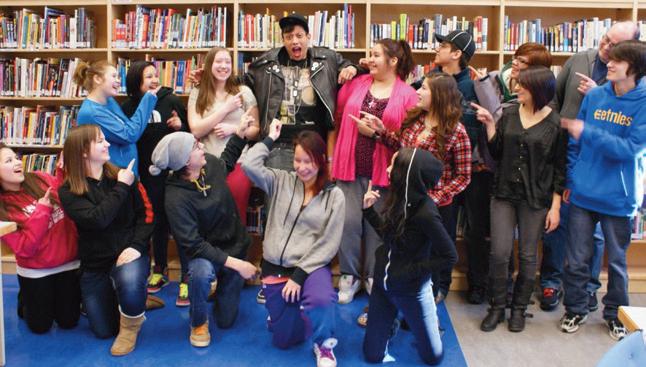
“For youth, getting to contribute to the cultural vibrancy of their community and using their voices is a really important thing.”
Solheim says that every year, when she goes in to welcome the participants on the first day of the youth workshops, she sees a lot of shy faces. Five days later, when she listens to them read their work in front of their friends and families, she can see “how much they ’ve grown, the bonds that they’ve made, and how much the writing has improved.”
Mushtaq adds, that the supportive environment created by the writing instructors is one of the reasons why the young participants feel empowered to learn and be creative in the Sage Hill workshops.
“In every group I had, everyone was so willing to share their ideas and share their passion for writing,” she says. “I think that in a regular classroom setting, sometimes we don't really connect. But this summer program was just a very safe space. There was no judgment, so we were all really willing to take risks with our work.”
“Students who are interested in creative writing might not find support in their school, but they can find support through us and through the community that they build with the other students. For youth, getting to contribute to the cultural vibrancy of their community and using their voices is a really important thing.”
— TARA DAWN SOLHEIM
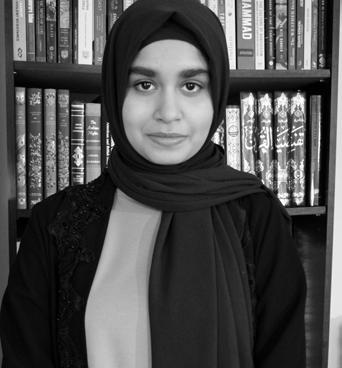
One of her favourite memories at the Sage Hill workshops was the reading events at the end of the program. She explains how she worked on a piece about Islamophobia for one of her readings and how getting to write about her identity in a safe environment changed her. “It made me a much more confident person. It felt cathartic for me to have that presentation and to have all the writers around me support me as I presented that poem. I think that after that poem, I grew.”
Now a history student at the University of Saskatchewan, Mushtaq has many goals for her writing because of her Sage Hill experience, such as being part of writing festivals, publishing more poems, publishing a book. “I came into that program as a very shy writer. I came in kind of unsure. But by the end, I had realized that art is very diverse, and it is not just for one type of person. If I genuinely want to keep doing this, I don’t have to feel like it’s impossible.”
Sage Hill’s programs are supported by operating funding from the Professional Arts Organization Program (PAOP) through SK Arts supported by funding from Sask Lotteries through the partnership between SK Arts and SaskCulture.
 Mushtaq (top right) discovered her creative voice and a safe space to express her experience of Islamaphobia at the Sage Hill Writing Workshop. (Photo courtesy of Warsha Mushtaq.)
Mushtaq (top right) discovered her creative voice and a safe space to express her experience of Islamaphobia at the Sage Hill Writing Workshop. (Photo courtesy of Warsha Mushtaq.)
During COVID, Lindsay Smith used beading to pass the time and to connect to her Cree heritage. She also found it helped her cope better with the isolation. So, when she was asked to teach a beading class for the Dream Broker program at W.J. Berezowsky School in Prince Albert, she knew she needed to say “yes”.
Smith, who has been beading since 2014, says, “That’s why I was really interested in providing these teachings to the students to reconnect them to their culture and to give them some skills to cope with their mental health, so they have something healthy to turn to.”
When Smith taught the program, she focused on teaching patience by helping the youth, ages 10-14, recognize how to get in the right mindset before beading, as well as how to go back and fix a mistake.
“I told them to bead with a good heart. If you’re angry, if you’re feeling frustrated, let’s talk about that before you start beading, otherwise it’s not going to work out.” Smith also taught the kids to recognize their emotions by how they chose certain colours of beads, on certain days, depending on their mood.
Laurie Huet, Dream Broker, W.J. Berezowsky School, says Smith’s way of teaching the youth was beautiful and gentle. “Lindsay taught about patience and being in a good mindset, or your thread will knot up, as well as, everybody’s equal who’s sitting at the table.”
Huet goes onto say cultural programming, such as beading classes and ribbon skirtmaking, are needed by the students at the school, who are 70 per cent Indigenous and often face barriers to participation. In her role as a Dream Broker, Huet works to connect children and youth to cultural activities so they can experience pride in their culture.
BY JACKIE LEDINGHAMBy the end of the beading sessions, the participants had made earrings and lanyards. But most importantly, she says, many youth found out they were good at something artistic, which gave them confidence. The students also connected in other ways. She says, “They were able to realize that they could do things on their own, as well as, getting ideas off of each other.”
“I told them to bead with a good heart. If you’re angry, if you’re feeling frustrated, let’s talk about that before you start beading, otherwise it’s not going to work out.”
— LINDSAY SMITH
One particular student, who barely spoke at the beginning of the sessions, stands out for both Smith and Huet. Smith says, “She was very closed off at the beginning and wouldn’t talk, but she was a natural beader. By the third or fourth class, she was talking and willing to help other students when they were stuck. That young girl came out of her shell. She was very humble. She didn’t brag or anything about her work, but you could tell she felt good about it.”
Another student is now selling her bead work at the local Farmers’ Market and finding her passion in beading. Smith says, “She told me, I just like to share it now. I know how to do this and people like what I’m doing.”
The Dream Broker program, offered in seven schools in Saskatchewan, is supported with funding from Sask Lotteries. This program received additional support from Creative Kids.
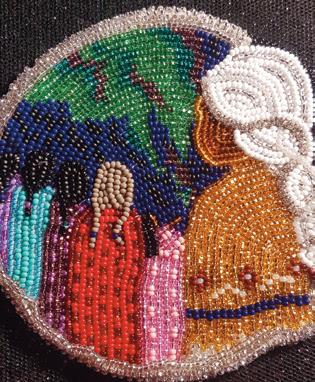
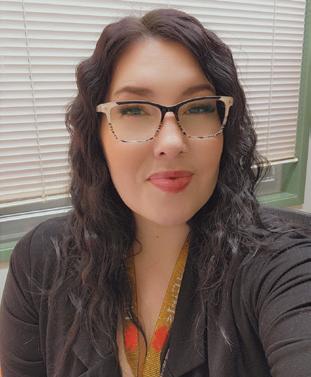
 Lindsay Smith taught youth how to recognize their emotions and have patience through her beading sessions. (Photos courtesy of Lindsay Smith)
Lindsay Smith taught youth how to recognize their emotions and have patience through her beading sessions. (Photos courtesy of Lindsay Smith)
When Ethan Booker’s mother moved from a German-speaking community to English-speaking Saskatoon, she made up her mind that her kids would still learn to speak her language. Today, Booker believes that this decision changed his life for the better.
“When I first started learning German, I didn’t really think about the impact that it would have in my life,” Booker says.
The high school student, received the Saskatchewan German Culture Assistance Fund German Language Award in 2023. This award was created to encourage students to pursue studying the German language, says Gabriele Waidelich-Harrison, executive director, Saskatchewan German Council. “Language is particularly important because we believe that language goes hand-in-hand with culture,” she says. “Learning languages fosters cross-cultural understanding and global thinking — we learn to see beyond ourselves and our own lives. I really believe that learning languages connects us to one another.”
Studying German since preschool, Booker says that learning to speak the language of his family has brought him a sense of connection to his heritage and his
community. “My mom wanted to make sure that I was able to connect with that — part of her family and that part of her life — by getting introduced to the language. For me, the biggest thing is that it has given me a connection to my history. It has also connected me with people who have similar interests as me.”
Learning a language also led him to other opportunities, such as taking German folk dance for over a decade. “I’ve met so many amazing people at performances who I’ve been able to connect with,” he says. “I can connect with other people in the German community that I have never met before, because I share something in common with them.”
In his German classes, Booker always feels like he automatically has something in common with all his fellow students. No matter what brought them there, they all share a love for the language, he says. “For some of us, maybe we weren’t born in Germany, and maybe some don’t have any family that lives in Germany, but we can still learn the language. It’s our way of expressing our love for our German culture.”
Waidelich-Harrison says, every year, the applications to the German Language
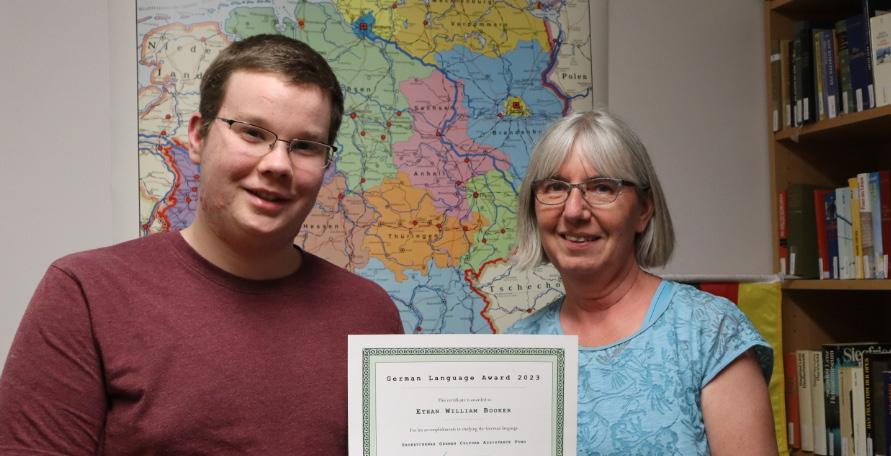
Award come from a varied group of students with many different stories of how they came to love German. She highlights that learning a second language is something that every kid can benefit from. In fact, research suggests that exposure to more than one language aids brain development in children. “It helps children understand languages better in general, by learning about grammar and structure that can be applied to other things too,” she explains. “Learning languages is good for gaining knowledge, but also for enriching our lives. It opens so many doors.”
“Learning languages fosters cross-cultural understanding and global thinking — we learn to see beyond ourselves and our own lives. I really believe that learning languages connects us to one another.”
— GABRIELE
WAIDELICH-HARRISON
Throughout the years, he has come to realize that he has gained so much knowledge, experience, and connection from his time attending language classes. Booker plans to continue practicing his German as he heads into his post-secondary education. He says that receiving the Award showed him that, “if you keep on pursuing something, eventually the hard work is going to pay off.”
The German Language Award is a program of the Saskatchewan German Council, which receives Annual Global Funding from Sask Lotteries Trust Fund for Sport, Culture and Recreation.
By learning German Ethan Booker gained a connection to his heritage, along with an award. (Photos courtesy of the Saskatchewan German Council.)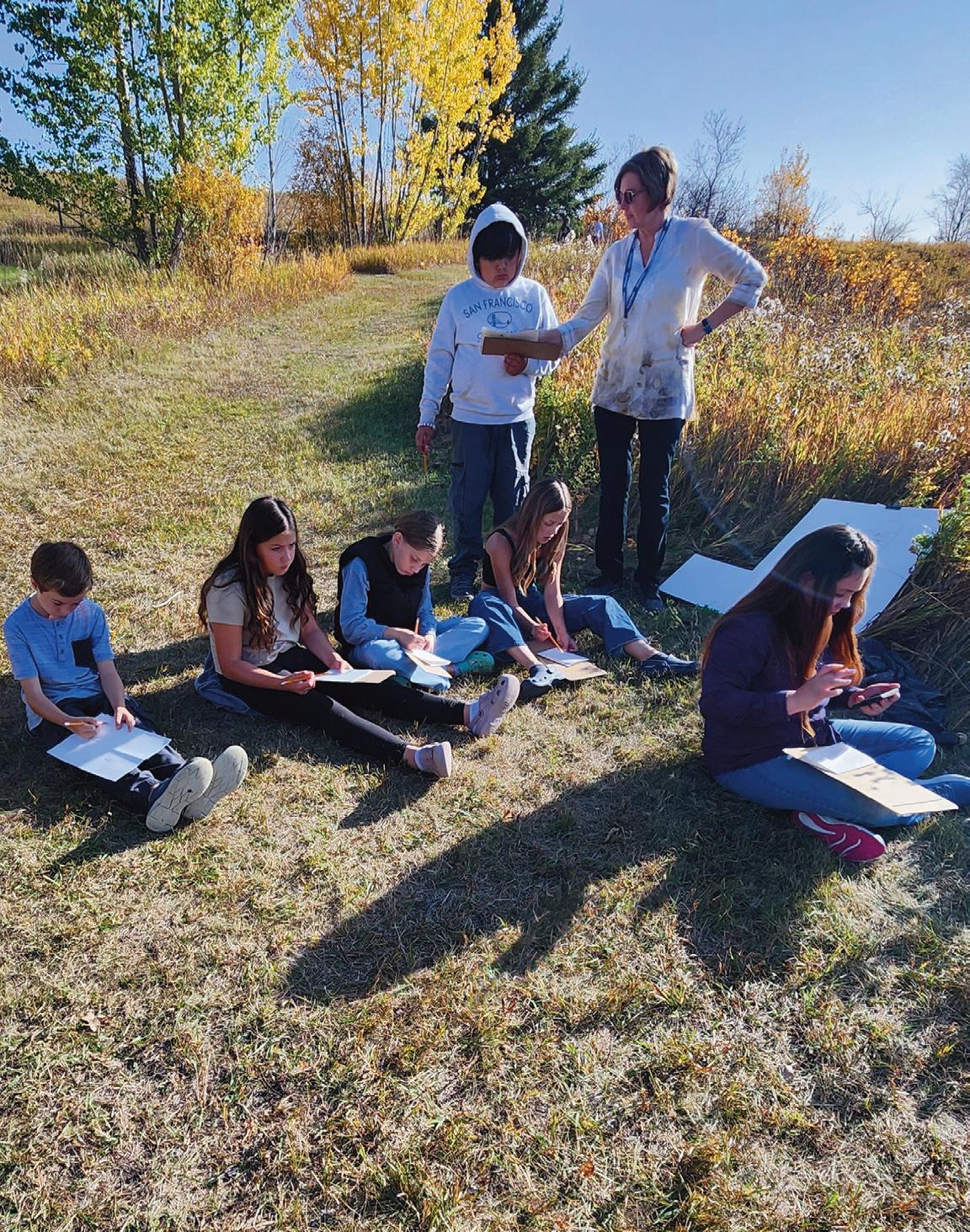
For some students, school does not come easy. This was Artist Bonny Kendel-Macnab’s experience until she found art. Through her recent residency, she demonstrated how beneficial naturebased art can be for students.
“I struggled in school,” says KendelMacnab. “Art is a safe place for those that struggle academically. That's why I'm so passionate about getting art in the school and connecting to those students so they know where they can thrive.”
From September to October 2023, the students of Turtleford Community School practiced art in nature with KendelMacnab, as part of the new SK Arts Artist in Schools - Residency. Her residency was the first in SK Arts’ new approach to the program, launched in spring 2023, which allows artists to work in the school-setting full-time, for up to five months.
Jody Greenman Barber, program consultant, SK Arts, says the new residency program is more beneficial to the students. “It’s about relationshipbuilding and the artist having more of a presence in the school environment.” The previous residency had artists in schools for six-to-12 months, with half their time in the school and half in the studio. The shorter time frames are easier for schools to commit to and give students more exposure to artistic practice.
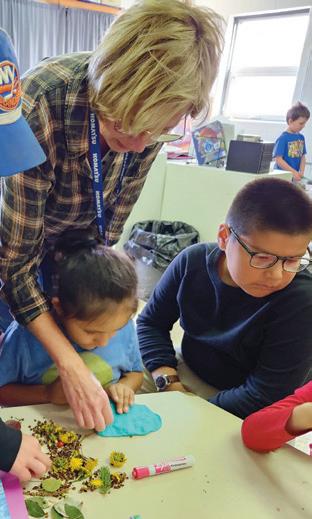
“Art is a safe place for those that struggle academically. That's why I'm so passionate about getting art in the school and connecting to those students so they know where they can thrive.”
— BONNY KENDEL-MACNAB
Kendel-Macnab, a multimedia artist from Mervin, Sask., worked with each of the school’s K-12 classrooms. Specializing in botanical printing and plein-air painting, she proposed six different art projects for classes to choose from at the beginning of the residency. She then took students outside to gather materials and inspiration, guiding them through each artistic practice.
One of the skills she demonstrated to the students was her unique way of approaching her art. “They saw that my process is not a finished piece all the time. It’s also studying and observing value and light,” she says. “I wanted to help them appreciate nature more, to realize that it’s a really peaceful and connecting place.”
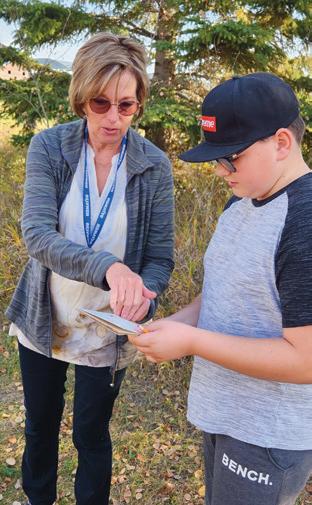
Younger grades turned leaves into bookmarks and practiced landscape painting by the Turtle River. Older grades dyed fabric with plants, steamed bundles of leaves in paper to make eco-prints and turned rough blocks of wood into encaustic pieces with found materials, such as nails, dried flowers and beehives. Six of the projects were turned into small murals, which will eventually be hung in the school.
“They are absolutely stunning,” says Kendel-Macnab. “It was exciting for me to see the students unleash their creativity.”
Brent Keen, a Grade 5 teacher at Turtleford, says Macnab’s practice of observing and working in nature was not only in line with the school’s landbased curriculum, but that it inspired and brought growth to kids who struggle in the classroom. “It opens students up in unique ways. The conversation that goes on, the engagement, the joy that happens when you get out of the classroom, it was delightful.”
The ultimate goal of the new residency, Greenman-Barber says, is to see more artists in schools full-time. “Art really supports student confidence and builds self-worth. It could really ignite something in a kid. You don’t know where that impact is going to be.”
The Artists in Schools Residency program, delivered by SK Arts, receives funding from Sask Lotteries through a partnership between, SK Arts, SaskCulture and the Saskatchewan Ministry of Education.
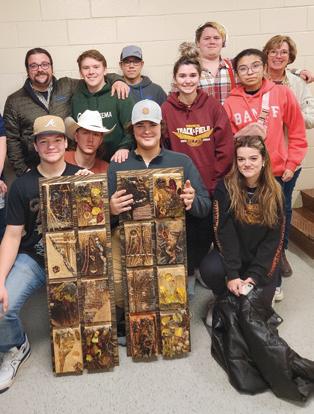
In the land of living skies, a unique symphony transcends the boundaries of music to instill resilience and discipline, as well as forge friendships among the province’s young musicians. The Honour Groups program, orchestrated by the Saskatchewan Music Educators Association (s MEA) , stands as a testament to the transformative power of music in the lives of youth.
The Honour Groups program, open to students from grades 9 to 12, is an annual musical event that offers an exhilarating three-day experience for aspiring band and choir musicians in the province. Participants connect with fellow young musicians across the province. Over two-and-a-half days of intensive rehearsals, their skills are refined,
culminating in a vibrant concert on the final day, guided by world-class conductors from around the world.
Sharon Bates, a band teacher for over two decades and long-time board member of the Saskatchewan Music Educators’ Association (s MEA) , has been coordinating the Honour Groups since 2019. Bates describes the program as a platform for students to build confidence while refining their musical abilities.
She describes instrumental bands and choirs as “the ultimate team sport”, in which the social and collaborative dynamics are important to youth. Each young musician in the ensemble contributes to a shared goal,
underscoring the significance of effective communication and teamwork. As a result, students are challenged with the unique opportunity to play or sing with an unfamiliar group.
“There are new ways of learning when you play an instrument with a group that you’ve just met,” says Bates. “It does build some resilience and helps with their problemsolving.”
Students, especially those from smaller communities, who are used to practicing in smaller groups, benefit from the exposure to larger ensembles. The Honour Groups not only broaden their horizons, but also provide students with the opportunity for more specialized instruction.
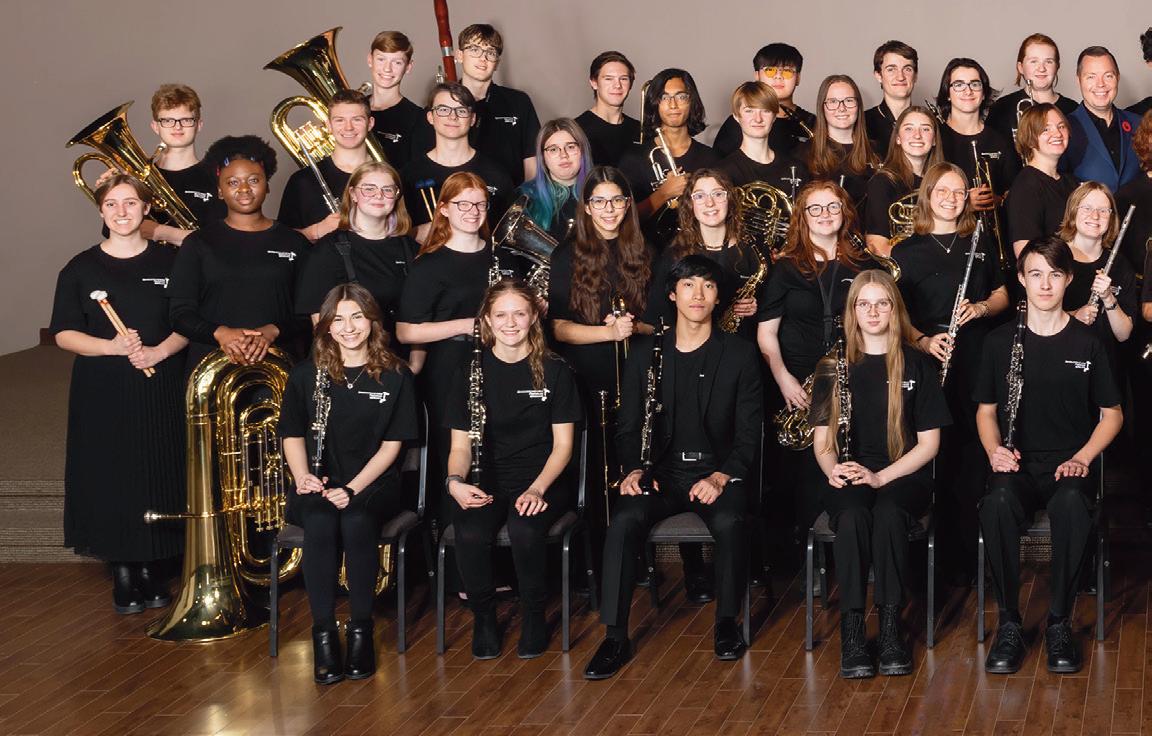
“There are new ways of learning when you play an instrument with a group that you’ve just met,” says Bates. “It does build some resilience and helps with their problem-solving.”— SHARON BATES
A participant in the program, Aidra Angelstad, a talented percussionist based in Humboldt, was encouraged by her former band teacher Bates to audition. She enjoyed her experience last year and returned to the program this year. “It’s such a privilege to work with professional conductors and the musicians that are brought in to teach sectionals.”
Aside from the opportunity to sharpen their musical abilities, students experience the joy of sharing their passion with other participants. Camaraderie and bonds are
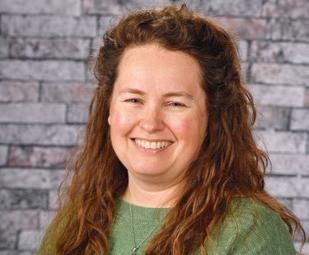
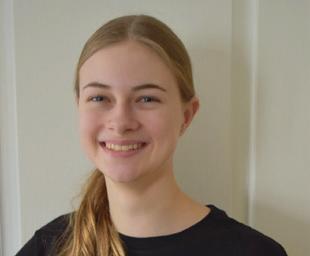
forged with like-minded individuals who have a passion that extends beyond the realm of music.
Bates says, “Relationships are always the most important thing when you’re teaching or working with students. My favorite thing is watching the kids work and learn to play together. It ’s the group effort involved that is pretty amazing.”
Angelstad echoes these sentiments and says, she enjoys making new friends and
working with other musicians. “It was amazing how the band came together and created beautiful music that resonated with me afterwards. It is an amazing experience. And it’s extremely well organized and a wonderful opportunity for high school musicians.”
The Honours Groups Program is offered by SMEA, which receives Annual Global Funding from Sask Lotteries Trust Fund for Sport, Culture and Recreation.
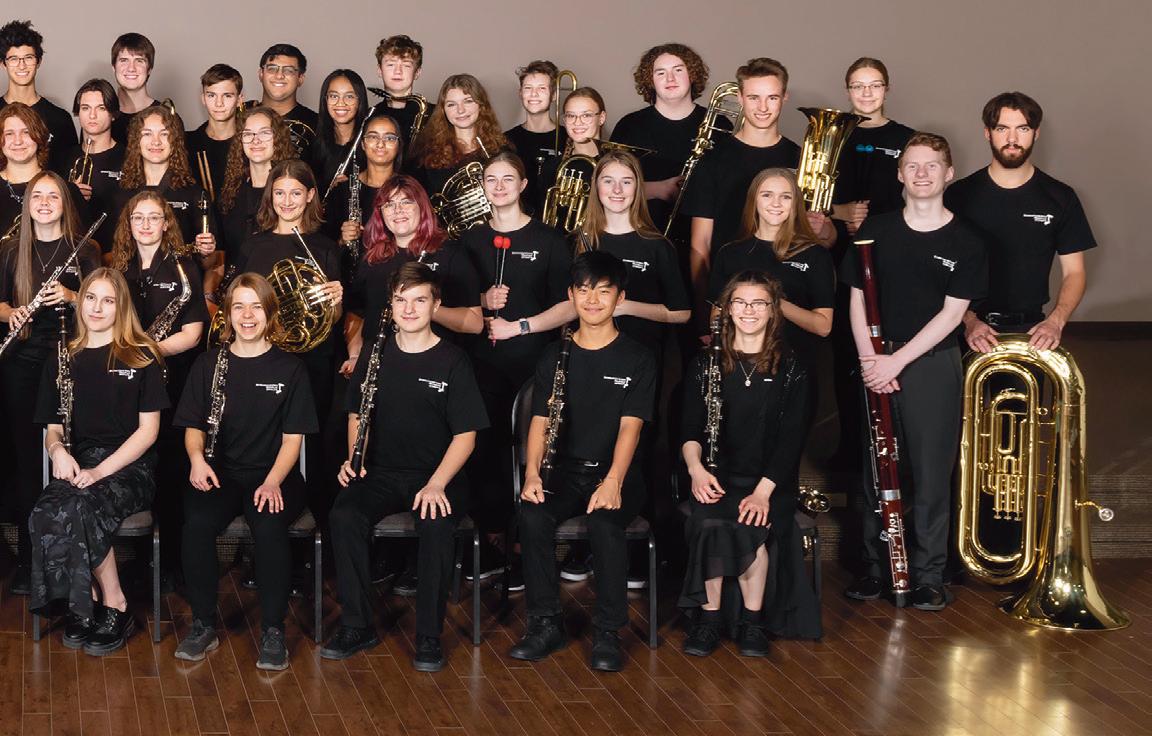 Sharon Bates (top left) coordinates the Honours Band Program so that participants, such as, Aidra Anglestad can hone their expertise as musicians. (Photos courtesy of Sharon Bates and Jackie Bay.)
Sharon Bates (top left) coordinates the Honours Band Program so that participants, such as, Aidra Anglestad can hone their expertise as musicians. (Photos courtesy of Sharon Bates and Jackie Bay.)
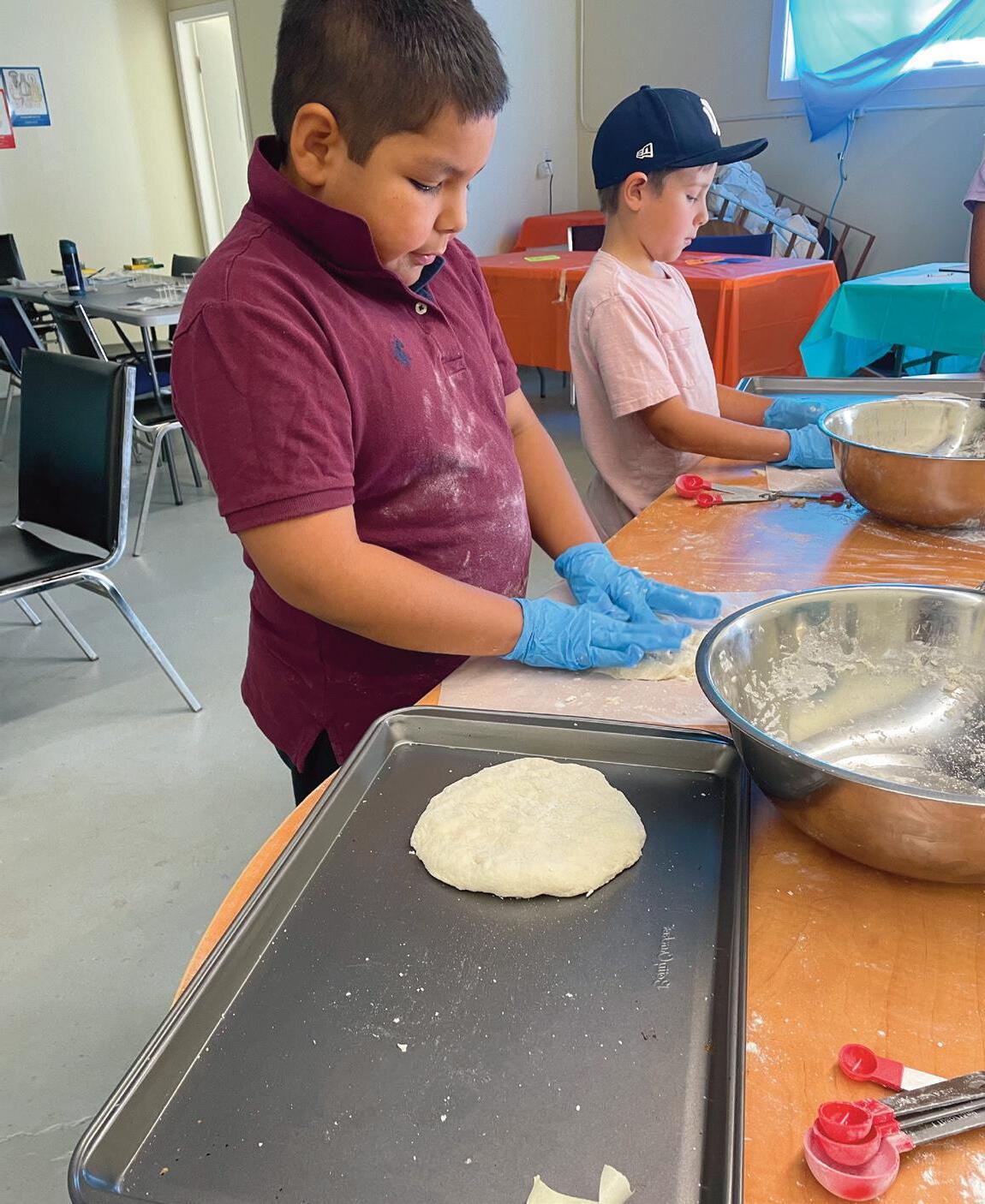
anguage revitalization continues to be on the rise. And, the revitalization of Michif is no exception. Not only does learning a language build connectedness to culture, there is significant proof that it also has the power to instill pride in youth.
Gail Johnson, Métis President of Local 269, took this into account when she helped create Michif Children’s Culture Day Camp as a part of the Connecting through Métis Culture initiative.
“The inspiration for the camp was to give children the opportunity to hear the Michif language used daily and hopefully inspire some children to add new words to their daily lives,” says Johnson, about the week-long camp that took place this past July in Prince Albert. “We also wanted to provide children the opportunity to participate in their culture and language by interacting with Elders.”
Building intergenerational learning techniques is beneficial for communities, especially considering many Indigenous
“The children that have pride in learning develop a pattern that helps them succeed in adulthood while also teaching them how to have empathy for other people.”
— ELDER ELAINE CAMPBELL
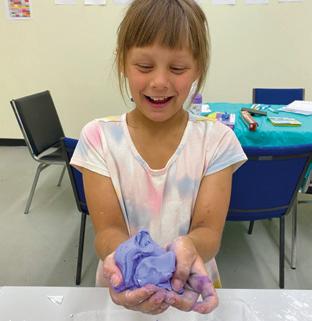
languages are at the threat of extinction. “Some children hadn’t heard their language spoken before the camp,” Johnson says. “One of our goals was to ensure children would be able to introduce themselves in Michif at the end of the week.”
In addition to language learning, Elders also carry traditional knowledge and practice with them, so their involvement was crucial for Johnson. “Elders hold the knowledge of our culture, while also representing our communities’ cultural values and being a role model,” she says.
Elaine Campbell, one of the Elders invited to share at the camp, believes that cultural knowledge instills a strong sense of pride in young learners. “The children that have pride in learning develop a pattern that helps them succeed in adulthood while also teaching them how to have empathy for other people,” she says.
To complement the language learning initiatives, a variety of cultural elements were introduced to the participants throughout the week. Children were able to learn lessons on native plants, beading, jigging, sash-weaving and pointillism (a style of art that uses dots to form a picture). Incorporating other elements of culture was a natural way to explore history and traditions, explains Johnson.
“Passing on cultural practices gives everyone a sense of belonging,” says Brenda McDougall, an Elder involved with the camp. “It promotes the passing on of important knowledge, skills, craftsmanship and language. It helps to shape who we are today and where the future may take us.”
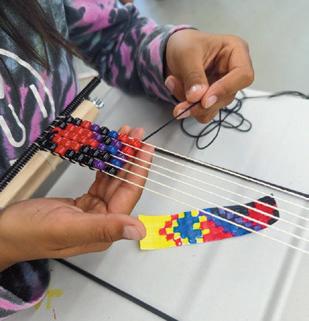
By the end of the camp, children had a better understanding of their cultural history and were able to introduce themselves in Michif. “Meeting one of the youngest students two months later and having her say the Michif words she learned at camp was so great,” Johnson says. “And there were several children that said they were going to learn more about activities we did and continue to participate in them outside of the camp.”
Cultural camps build strong communities who are engaged in history and tradition, and after plenty of positive feedback from participants and their families, Johnson plans to ensure there continues to be an abundance of cultural learning opportunities available for future generations.
The North Saskatchewan River Métis Nation Local 269 received project funding from the Métis Cultural Development Fund, administered by Gabriel Dumont Institute, on behalf of SaskCulture, with funding from Sask Lotteries.
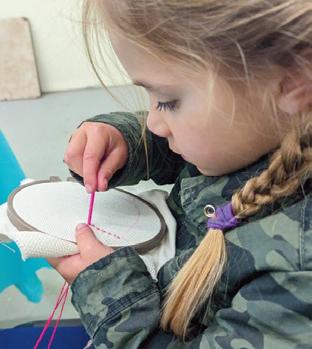
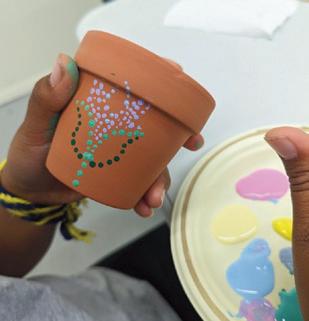
Art can be a powerful tool to incorporate young voices into community-wide conversations.
For over 28 years, Monique Martin’s creative installations have shown that art is more than just a medium of expression. Her work has the ability to unlock her student’s creative potential, giving them the confidence to share that creativity with their community.
“If you engage students in the community, they will respect that community more than before, because they feel a part of it,” she says. “The art they do that goes on their fridge, is one level, but engaging kids in the arts that go into their community is different, and both levels are important.”
Martin, born in Saskatoon, is a renowned installation artist and printmaker whose work has appeared worldwide. Her innovative installations and immersive art projects empower young people to engage with complex global issues.
She says that when students understand the stories behind the art, “those moments are super special, and they will remember them. We must give them the confidence that they are doing something valuable.”
She believes arts education with young artists should not be confined to the studio. These opportunities should extend into communities, sparking dialogues and encouraging collaboration.
“I engage my students in global concepts, such as, the environment and human interaction,” she says. “I want them to engage in larger ideas. It's easy to make little installations and stick them up, but to make the students think about it later and engage the community in their thoughts is a little bit harder. That is what I aim for.”
Martin’s art installations have been a part of Nuit Blanche for several years. The arts festival takes place in Saskatoon every September during Culture Days. In 2021,
during the pandemic, she engaged kids in creating 20,000 paper butterflies, all of which had the words "breathe" on the wings and glowed in the dark, as part of an installation, called Breathe Project, set up inside a semi-trailer.
“The reason I did that is, we breathe 20,000 times a day. At the time, breathing was on everyone's mind, and we were all being transformed by the pandemic, which is a great symbol of the butterfly,” she says. “The students were part of that. They were engaging, talking to the community about why they had to do this creative work, about 20,000 breaths, and how important breathing is. Just that simple concept of 20,000, they carried away with them.”
In another project, held during Nuit Blanche in 2022, called An Ocean of Plastics, Martin worked with students from St Anne’s School in Saskatoon to create an art installation made from thousands of plastic bottles. “We had these huge installation elements (large paper mâché ocean creatures) surrounded by the plastics. This greatly impacted the kids. They talked about plastics and how plastics in the ocean are a problem we must solve. They learned all of that while making art.”
Martin’s impact is clear as an arts educator, extending beyond mere participation. She seeks to empower young artists by providing them with the skills and confidence to express themselves authentically.
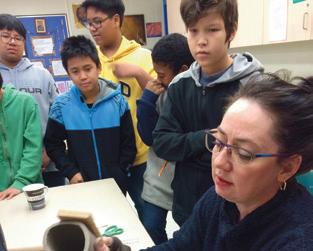
“If you engage students in the community, they will respect that community more than before, because they feel a part of it. The art they do that goes on their fridge, is one level, but engaging kids in the arts that go into their community is different, and both levels are important.”— MONIQUE MARTIN
She says, that is also why it’s important for art educators to use the correct terms when addressing and engaging youth in the arts. “When I work with students, I call them artists. We call kids doing sports “athletes” right away. The labelling we use is important because it is empowering.”
Nuit Blanche receives support from the Culture Days Hub Sponsorship offered by SaskCulture, funded by Sask Lotteries Trust Fund for Sport, Culture and Recreation. For past projects, Martin has also received funding from the Artist in School and former Art Smart grants, funded through a partnership between SK Arts, the Ministry of Education and SaskCulture thanks to funding from Sask Lotteries.
 Martin empowers her students to speak about global issues through art projects.
Martin empowers her students to speak about global issues through art projects.
Caitlin Preston’s passion for teaching dance has instilled in her students the importance of developing strength, as well as flexibility in the body and mind.
“I teach them the discipline to work on their craft not just when they are motivated, but to work it into their daily routine. Nobody wants to come to dance all the time, so it’s learning to practice anyway,” says Preston, director, Prairie Gael School of Irish Dance in Regina.
Preston became an instructor at the dance studio in 2011, and two years later she became Regina’s only certified traditional Irish step dance instructor after successfully challenging the Teagascóir Coimisiún Le Rinci Gaelacha (TCRG) – examination in Atlanta, and gaining her TCRG credentials through An Coimisiún Le Rincí Gaelacha (CLRG) in Dublin. In 2015, she became a director of the studio. Recognizing there was a demand for the competitive end of Irish dance, she now teaches beginners all the way to International levels. Through her efforts, one of her students, Mariel Boucher, will be the first student in Regina ever to compete in the CLRG World Championships in Glasgow.
One of the things her students gain through joining her dance studio is a connection to the Irish culture. She says, “They get a good bringing up in the Irish culture.” Also through competitions, known as feiseanna, which means festivals in Irish, they are exposed to the Irish community from all over the world. Through her classes they are learning the traditional dance forms and music, as well as, the different Irish language dance terms, such as Ceili, which can mean “a visit”, or “a gathering”.
Besides learning about the Irish culture and to be disciplined, there are many other benefits and skills that are developed in her dancers that often lead to academic success and attending university. “Dance builds confidence. They learn to deal with frustration and challenges, as well as learning the difference between being uncomfortable and not actually being able to really do something. In competition, there’s learning to separate the results from your self-worth, as life doesn’t always work out the way we want it to.”
She goes onto to say, dancers are some of the strongest athletes in the world.
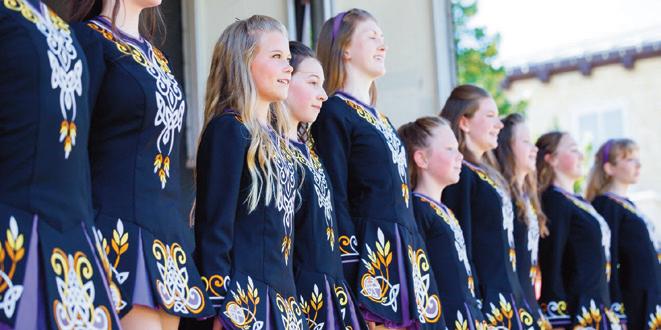
There are many physical gains that dance develops, she says, such as a connection to your body and an awareness of its needs, as well as balance and spacial awareness which helps with coordination just to name a few. Many of Preston’s dancers are athletes and have won multi-sport athletic awards.
Preston says, since she started teaching, she has loved every moment of her experience and has formed deep bonds with her students. “I find teaching probably one of the most fulfilling things I’ve done in my life. It pushes me to learn how to communicate better. It’s quite a thing to be able to teach children from the age of three until they graduate from high school.”
Through goal-setting, individualized training programs, access to resources, ongoing support and guidance, Preston helps her students achieve those goals.
Overall, she says, arts and cultural activities are important for children and youth to experience so they can find their passion. “I think any creative activity is awesome. It’s a great emotional outlet to forget your troubles for a couple of hours and have some fun. As well as, being able to create something and put it out in the world.”
Preston has helped families access funding for dance lessons through Creative Kids and is also registered as a service provider for the charity.
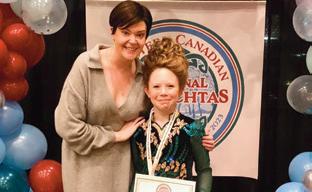 Caitlin Preston works to ensure dancers not only enjoy their experience, but gain confidence and discipline.
Caitlin Preston works to ensure dancers not only enjoy their experience, but gain confidence and discipline.


When Matthew Schermann was around eight, he saw an older youth from his hometown of Strasbourg, perform in a SaskExpress show. He knew immediately that he wanted to be part of this experience.
“I saw him and I said, ‘I want to do that’,” he says. “That performance solidified my wanting to become an artist.”
Now 18, Schermann has five musical theatre shows under his belt with SaskExpress and has joined two of its summer tours, travelling and performing in cities, towns and provincial parks across Saskatchewan. “I’ve had such amazing opportunities.”
While SaskExpress has been in existence for 40-plus years, it wasn’t until 2017 when Danny Balkwill came on as Artistic Director and CEO, that the company embraced story-based theatre, as part of both its touring and theatre shows.
“I wanted to make some changes to keep SaskExpress fresh and relevant,” Balkwill says. With his experience in musical theatre in New York, in film and television, and as a musician, Balkwill shifted the company’s long-time tradition of musical reviews to producing well-known shows, such as Seussical and White Christmas, as well as jukebox musicals, such as We Will Rock You. In addition, Balkwill writes original shows for the summer tours.

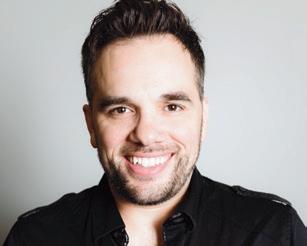
Schermann, who grew up attending SaskExpress’ musical theatre studio, says, he’s not only learned singing, acting and dancing, but generally how to be an all-around good person. As part of this musical theatre group, “You’re learning to make friends, make connections and to be kind to everyone,” he says.
Schermann most recently played the role of Buddy Holly in We Will Rock You, alongside Actor Cailin Stadnyck, who is a former member of SaskExpress. Stadnyck, now a seasoned professional, was recently part of the North American tour of the Broadway hit Come From Away, before coming back to Regina to star in the role of the “Killer Queen”. “It was incredible to work with her,” says Schermann. “It opens opportunities because the arts is all about the connections you have.”
Balkwill strives to provide youth top-notch training, but says SaskExpress also creates a place of belonging and community for young people. “One thing any parent will tell you right now, is the struggle of how to help kids feel like all their friendships are not solely online. SaskExpress actually gives kids physical, in-person support with like-minded people. Ninety-five per cent of our casts say to me, ‘I’ve made friends for life.’”
Spending weeks at a time on the tour bus, chatting with castmates, while eating Mr. Noodles in hotels, Schermann created many friendships. “Those summers have been some of the best in my life,” he says. Schermann will pursue theatre school in
“One thing any parent will tell you right now, is the struggle of how to help kids feel like all their friendships are not solely online.
SaskExpress actually gives kids physical, in-person support with like-minded people. Ninety-five per cent of our casts say to me, ‘I’ve made friends for life.’”
— DANNY BALKWILL
Toronto in the coming year, hoping to join some of his castmates who have already made the move.
Balkwill says, the SaskExpress theatre model is unique, because it showcases Saskatchewan performers who go on to become “celebrities in their own hometown”. While some move away, SaskExpress allows them to come back, such as Stadnyck, to perform with young people who are passionate about the arts. “To me, it just shows the power of people who love what they do.”
SaskExpress receives Annual Global Funding from Sask Lotteries Trust Fund for Sport, Culture and Recreation.

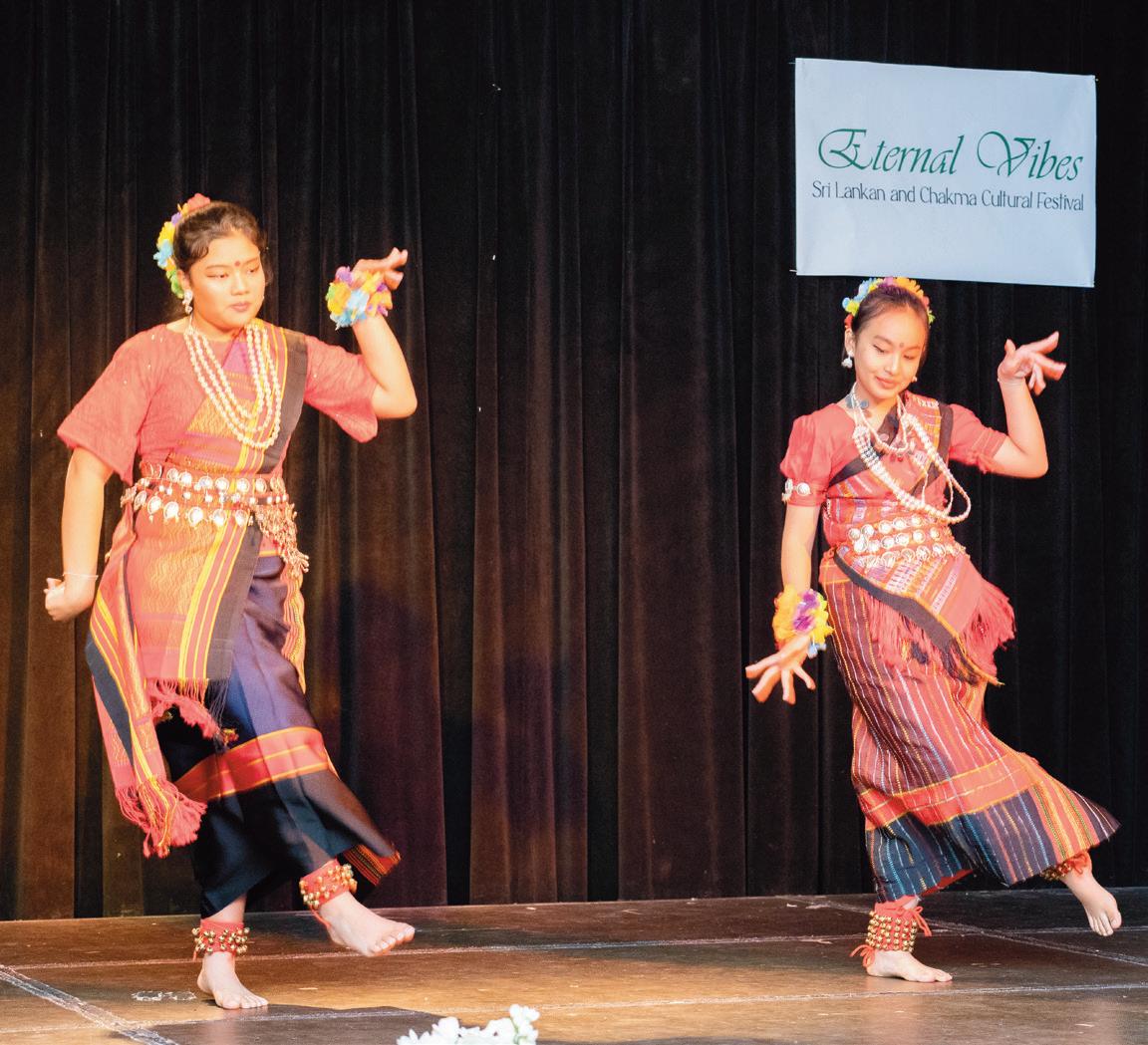
SaskCulture
404 - 2125 11th Avenue, Regina SK S4P 3X3 info@saskculture.ca • www.saskculture.ca

Participation in cultural activities allows children and youth a chance to find a lifelong passion. (Photo by FSI Studio (2023).)

Publication Mail Agreement #40063014
Return Undeliverable Canadian Addresses to:
Administration Printing Services
111-2001 Cornwall Street
Regina, SK S4P 3X9
Email: adminprint@sasktel.net